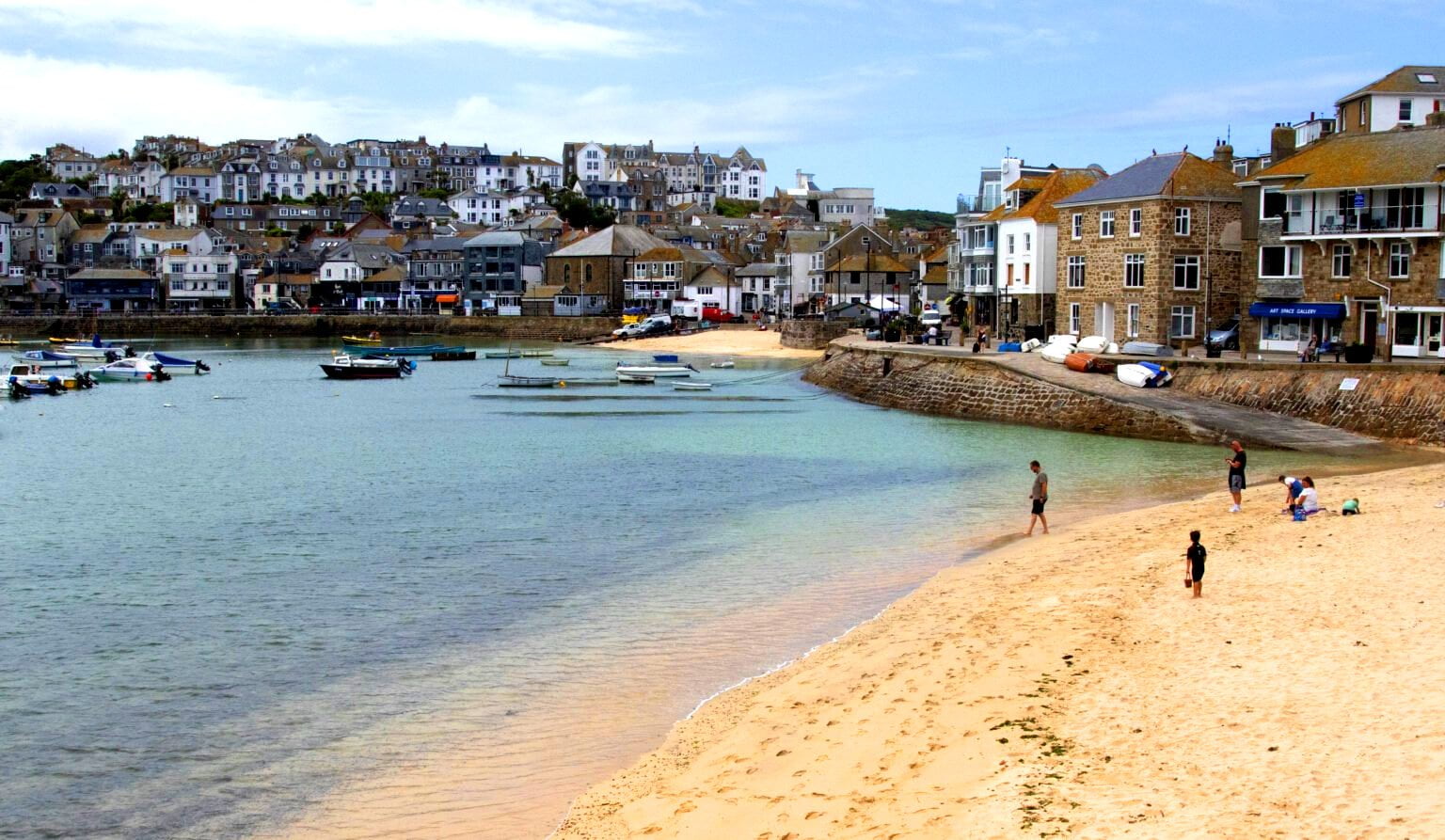Each week as I walk into the local baker to buy my school treat saffron bun, as it is still called, I am reminded of Sunday School treats 60 years ago when, as a small child, I spent my summer holidays with relatives in the quiet picturesque hamlet of Tregavarah in Cornwall. It was off the road leading from Penzance to St. Just about 9 miles from Land’s End, and consisted of only a few farm cottages with fields all around and a Methodist Chapel and Sunday School. The Sunday School celebrated its anniversary each summer on a Saturday and Sunday. On the Saturday the children, about 20 in all, some from the hamlet and some from outlying farms, were taken to Carbis Bay near St. Ives about 11 miles away for their school treat. It was a great event in those days to go so far afield and it was looked forward to immensely by both the children and the grown-ups. I also could not wait for the day to come as, although in London where I lived there were many exciting things to do, there was nothing to compare with a Sunday School outing by the sea in Cornwall.
The charabanc would arrive at the top of the hill about 9.30am.. It could not come any further as there was no room for it to turn in the hamlet and no through road. It was an open vehicle with a canvas hood which could be brought forward in the event of rain although I cannot remember it being any other than fine for the outing. It was not easy to be ready by 9.30 am., as in those days there was so much to do beforehand, such as the milking of the cows, fetching the water in buckets from the village pump, preparing the food, and bringing in the coal for the Cornish range which had to be kept going for cooking purposes both summer and winter. There were no paper carriers so grown-ups would have to take the food in wicker baskets up over the hill to the charabanc. There would be Cornish pasties, made early in the morning, heavy cake, and one or two home-made loaves with some butter to cut the sandwiches on arrival. There was no cut bread to make it easier. Then there would be Cornish splits, spread with home-made jam and topped with cream from the farm. The cream would be taken from the marble top in the dairy as there was no fridge in those days. The children would have to carry their heavy serge coats and hats in case of rain. There were no anoraks or raincoats. Some would be lucky enough to have a spade and bucket to take. Everyone would be in high spirits ready to enjoy the ride from the heart of the country to the seaside. Carbis Bay has a wonderful beach of golden sand and sea shells. In those days there were rows of beach huts as it was not the custom to undress on the beach. The country children, however, only paddled as their parents could not afford to buy them bathing costumes. The charabanc would stop at the top of the hill going down to the beach as there was a picnic area with a wooden but which the owners loaned out for tea treats. On alighting, the children would rush down to the beach while the grown-ups would make their way into the but to prepare the lunch. After lunch the party would split up, some to stay on the beach to make sand castles and paddle, while some would go to St. Ives either walking or by the two-coach train which still travels along that superb scenic railway line, but alas not driven by steam as of old.

The children who had saved up their pocket money for some time prior to the outing would have, in present day money, about twelve-and-a-half pence to spend. Those who had chosen to stay in Carbis Bay would perhaps spend their money on an ice-cream, a scoop of sweets and a donkey ride. There would be more to spend in St. Ives, such as a special ice-cream from Harts Ice Cream Shop on the harbour, which alas now is a Wimpy Bar. For the summer tourist an ice-cream from Harts ranked high on their list of musts. Everyone would be expected to return to the tea-room by 5.00pm., and sit down to their tea at long tables covered by white damask table-cloths. The Sunday School steward would say grace before distributing a tea-treat saffron bun to each child. The bun was, and indeed still is, about the size of a tea plate, golden brown, filled with plenty of juicy currants; one of the highlights of the school treat. After tea there would be games on the green. One of the most popular games was called Kissing Rings. One child would be selected to go in the middle of the ring of children who would dance around hand in hand, singing. When the leader, one of the Sunday School teachers, shouted, “STOP,” the child in the middle would tap one of the other children on the shoulder, kiss him or her, and that child would take the place in the middle and the dancing and singing would continue – very tame by today’s standards! About 6.30pm., the party would clamber back into the charabanc very tired, but not too tired to sing hymns all the home to Tregavarah with another year to wait for that anniversary outing – not forgetting the tea treat bun.
